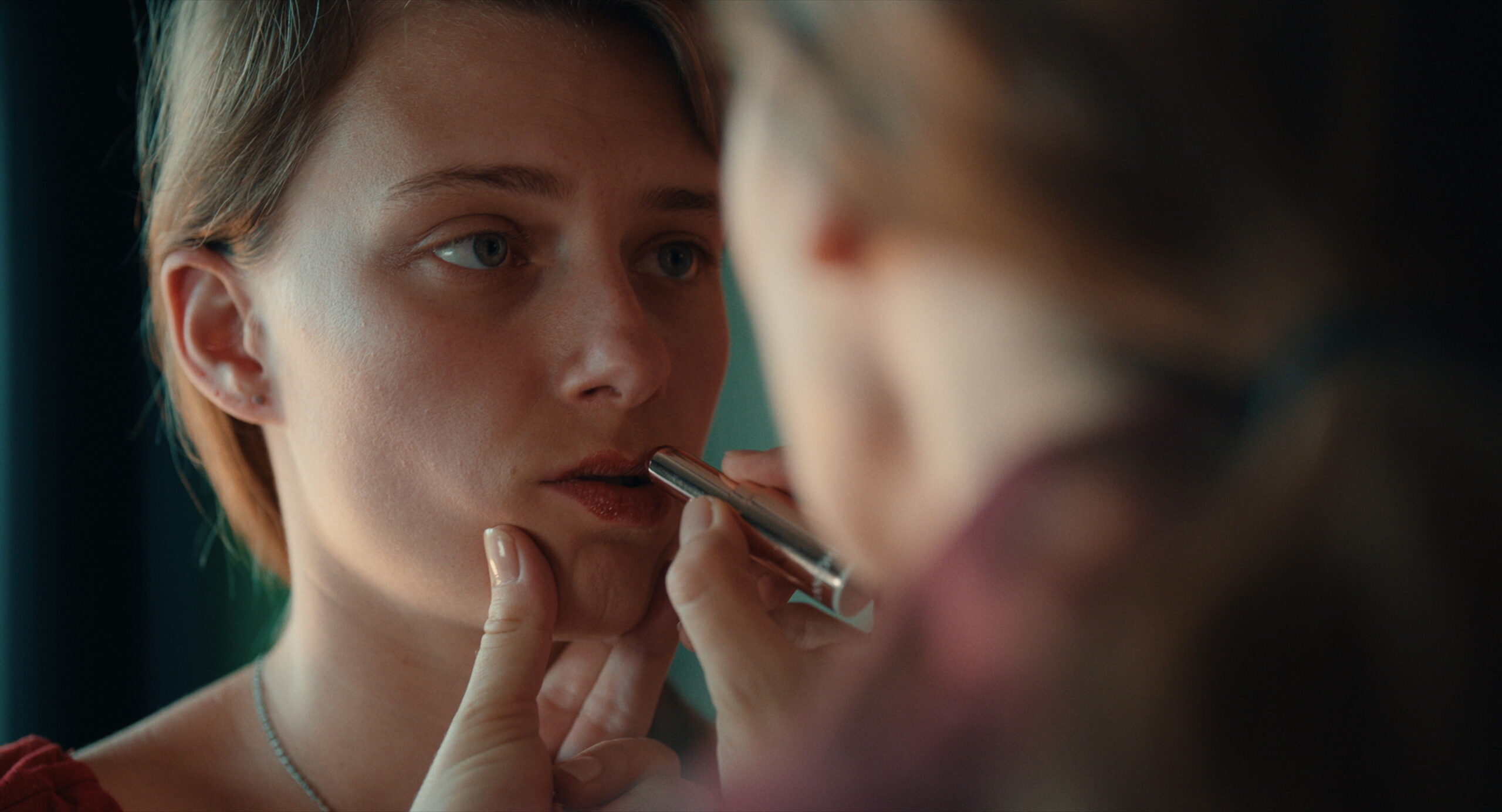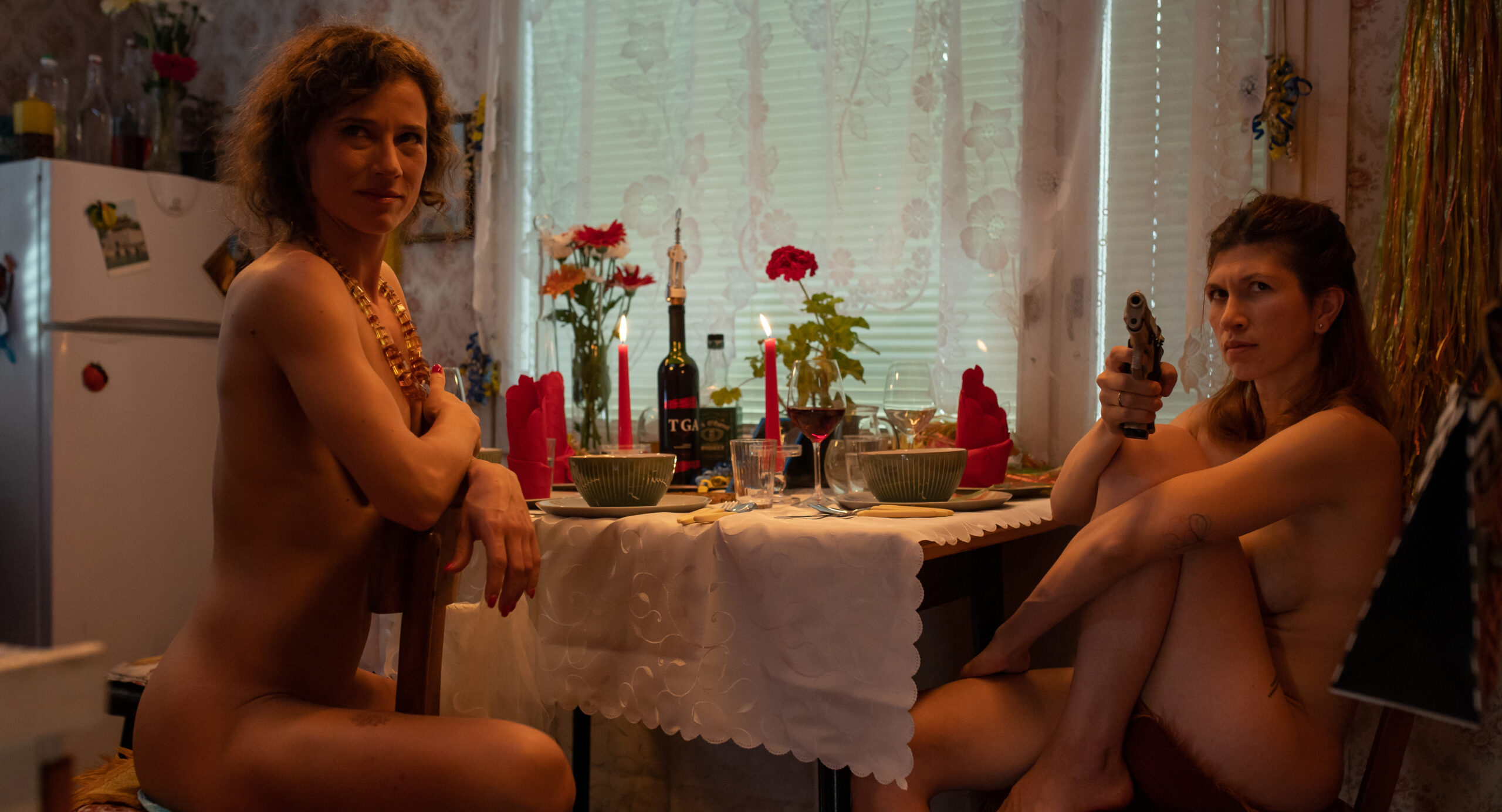interview
Milcho Manchevski Interview – Director and Writer of ‘Kaymak’
In Kaymak, the new comedy-drama from Golden Lion winner and Oscar nominee Milcho Manchevski, the city of Skopje, North Macedonia is depicted as a labyrinth of overlapping buildings, tight streets choked by impatient traffic, and busy marketplaces and bakeshops concealing secret desires. It’s a setting with a clear divide between socioeconomic classes, even as they’re connected by a common lack of fulfillment, and by kaymak itself—a local dairy product enjoyed by everyone.
Wealthy couple Eva and Metodi (Kamka Tocinovski and Filip Trajkovikj, respectively) long to raise a child of their own, while working class partners Danche and Caramba (Simona Spirovska and Aleksandar Mikic) can’t find the time for intimacy in their relationship. Both couples seem to find the answer to their woes with the introduction of the free-spirited Violetka (Ana Stojanovska) and a developmentally challenged young woman, Dosta (Sara Klimoska). But even as each couple finally starts to experience satisfaction in these new, unconventional arrangements, distrust also begins to brew.
By design, Kaymak is a film made up of vastly disparate plots that create unintended consequences for each other. Still, its collage of storylines comes together as a portrait of adults trying to regain control in an overwhelming world, despite their sense of morality becoming skewed. So in order to spin these plates evenly, Manchevski’s direction requires a deft touch in order to find something darkly comedic in troubling situations of trafficking and abuse, and something desperate in its most blissful scenes.
This versatility in tone extends to the performances from Manchevski’s ensemble, who prove more than capable of playing two sides to the same coin. But particularly striking is Spirovska, whose Danche is arguably the most righteous of the bunch and yet seems to be constantly punished for staying in her lane. Time will tell how many audiences Kaymak will be able to play to as it starts its international run, but the film’s unpredictable view of karmic justice should be a unique, tragi-comic experience for anyone lucky to see it.
We spoke with writer-director Milcho Manchevski over email to discuss setting, realism, and the importance of rehearsals.
This interview has been edited for publication.

Projektor: What are you drawn to when it comes to shooting urban spaces like Skopje?
Milcho Manchevski: Skopje is, unfortunately, a very dense and crowded city. Most sidewalks are taken over by parked cars; the city even charges fees for parking on the sidewalk. The urbanistic mafia, in close collaboration with corrupt politicians, has taken over the city and has been destroying the quality of life of its citizens for the last 25 years. Many apartments have lost their exposure to sun and fresh air because new high-rises have popped up where nice houses used to stand, just as in Kaymak. The small parks have been razed to make room for big buildings, pollution is among the worst in the world, all rules of urban planning known to mankind have been ignored and broken.
So the way this urban Quasimodo is portrayed in Kaymak is inspired by and is a reflection of the real city of Skopje, an urban metropolis going back to at least Roman times—a city that is living some of its worst moments now. Of course, my intention is never to simply reflect reality or to capture a “realistic” moment (if such a thing truly exists). The intention is to use the faithful riff on reality as one of the elements in a work of art that will explore and challenge and talk about issues bigger than daily politics or ideological dogmas. In addition to this, I am excited by the opportunities that dense urban living offers as a template for a piece of cinema.
The apartment building you use as your main location lends itself well to vantage points that help create character. How did you choose this particular building as your setting?
I spent months crisscrossing Skopje on my bike, looking for potential locations. Unfortunately, there was an abundance of these situations where a new building for the rich had come to loom over a regular house, so I had my pick. I am glad you bring up the vantage point, because that upstairs-downstairs element is one of the fun and important moments in establishing and developing the relationship between the haves and the have-nots in Kaymak. Externalizing and visualizing this concept was important.
Kaymak is meant to feature ordinary characters with realistic, adult concerns. How do you balance casting actors “realistically” while looking for something “actorly” in them?
It goes to the heart of what every film tries to do—take elements from real life (be it locations, people, costumes, or art direction) and weave them into new reality. There is no such thing as a “realistic” film. We always mediate reality to make a film; even when it appears close to the real thing, the filmmaker has made a number of choices to make you think the film is “realistic.” It is just another type of stylization. The particular finished film becomes your new reality and the viewer may like this new reality or may not. People respond to the world created in each film more than they respond to the story.
When making a film, it is a matter of striking a balance between what you have in terms of your material opportunities (the elements—locations, people, costumes…) and what you intend to create. I like finding the balance in a more organic way, letting the synergy between what we want and what is available play out rather than imposing myself too rigidly. With time I am becoming more laid-back about how much I control the world we are creating.
I would like to think that my work has become more complex with time—and that could explain the fact that it is receiving less wide exposure now than it did when I made more sentimental films.
You seem to have quite an extensive rehearsal process with your actors. What do you try to accomplish through rehearsal before you go to set?
The rehearsal (and the extended casting process) is among the most essential parts of the filmmaking journey for me. I usually spend about three weeks rehearsing—table readings, some blocking, and occasionally on-site rehearsals. From a practical standpoint it seems like an extra burden on the production—booking the actors for an extended period before the actual shoot begins. But it pays lush dividends, both in terms of the quality of the film and in terms of a smoother (and thus cheaper) shoot. When rehearsing, we work without the pressure of the actual shoot, the clock’s not ticking, the technicians are not getting in the way.
First, we simply read the script, scene by scene. Flat, no acting. Then we get into actually doing it. Actors do it the way they think it should be done. I watch and make adjustments. We talk about things. We find reasons why the characters do what they do. I call that Formanization, after Miloš Forman. We explain to ourselves what is going on in their heads and hearts. We talk about backstories. Sometimes, not too often, we change things in the script. Eventually, I expect the actors to perform the scene the way it will be performed in front of the camera—or at least I expect them to be 80% good in the rehearsal. Then we agree that that would be the way to do it for the camera, and I expect a good actor to be able to put this in a jar and open it weeks later, take it out, and repeat it when we are on set. Bergman used to say, “Rehearsal is creation, filming is re-creation.”

With so many different tones in the film, what would you say is your job as a director? How has your idea of the work changed or grown since you started?
I would like to think that my work has become more complex with time—and that could explain the fact that it is receiving less wide exposure now than it did when I made more sentimental films. The question of tone is much more important than most people think. It could be what makes us like or dislike a film—the tone, which consists of things that are difficult to describe: the kind of attitude the characters have towards each other, the attitude the filmmaker has to their audience, the opaqueness of the story, the stylization, etc. People usually want their films to have a consistent and predictable tone. Now, my preference as a film viewer, but also as a filmmaker, is more adventurous. I don’t mind disruption. On the contrary, I cherish it.
I’ve never had the chance to try kaymak myself. How would you describe its appeal?
If you like butter or cheese, chances are you’d like kaymak. It is the savory and thick cream of milk. And in the colloquial speech in Macedonia, “taking the kaymak” means gathering the crème de la crème. Which is something most of us try to do with our lives.
Kaymak had its world premiere at the 2022 Tokyo International Film Festival.
Curated by humans, not algorithms.
© 2025 A Good Movie to Watch. Altona Studio, LLC, all rights reserved.